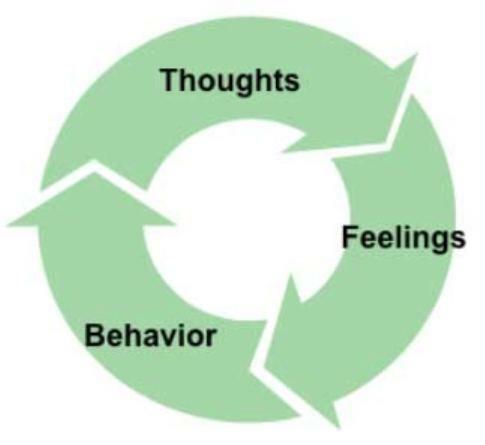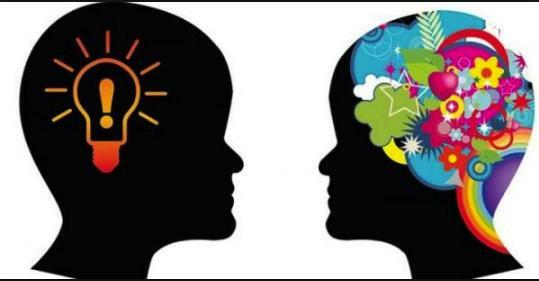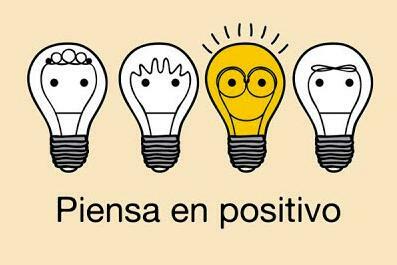
The active character of the human being It means that he is not a passive receptor of external stimulation, but that he chooses and, to a large extent, generates the scenario in which his behavior is going to develop. In this sense, people differ in the way in which they categorize the situations in which they find themselves, interpreting and giving meaning to the different indications present in them. Next we are going to develop the idea of conceptualization of personality in Psychology.
Index
- Sociocognitive study of personality and behavior.
- Conceptualization of personality
- Global units vs. Contextual
Sociocognitive study of personality and behavior.
Criticism of personality study based on the trait concept: People's behavior is not as consistent as predicted from the trait concept. Rather, it varies from situation to situation based on the specific demands that each situation poses. On the other hand, despite the situational variability of our behavior, we continue to recognize ourselves as the same person. Trait theories have been challenged by the use of global units (personality traits), which are
It is argued that the trait allows predictions averaged (applicable to different situations), but they do not allow predicting the behavior of an individual in a specific situation. That is, the traits make it possible to make predictions of eventual behavior (applicable to any situation), by understanding that the essential determinant of behavior is personality.
The trait allows the description of individuals and has a great classificatory utility (to identify trends behavioral average), but it seems to find many limitations in predicting the behavior of specific individuals in equally specific circumstances. An attempt is made to answer these questions from sociocognitive approaches, which are based on the conviction that: discriminability of behavior and the complexity of the interactions between the individual and the situation, suggest the convenience of focus more specifically on the way in which the person elaborates and handles each particular situation, instead of trying to infer the traits he usually has.
Conceptualization of personality.
Elements and basic units that make up the personality: The variables that define the set of personal resources, from Those in which the person faces the situation and sets in motion the dynamic process of any behavior are the following: Symbolization capacity: In the course of cognitive development and through various learning experiences, the individual goes acquiring information about himself, his behavior, the world around him and the relationships between these factors. Thus, he acquires the ability to generate cognitive and behavioral strategies, according to the new situations in which he finds himself at all times.
People, then, differ, not only in the competence they have on skills and knowledge acquired to generate strategies cognitive and manifest behavior, but also in the concrete strategies they put into play to face different situations with the resources they have (what is important is to know "what he can do with the resources that he possesses", rather than "what characteristics define "). People may differ in the cognitive transformations they introduce in stimulation, the impact of which on the individual is thus modulated by such cognitive strategies. In short, personal constructs are meaningful frames of reference, based on which the individual categorizes the various phenomena and events that he faces, including himself and his conduct. These filters are stabilized in the individual's cognitive repertoire to the extent that they are adaptive, since, Through them, the individual can predict the behavior of others and anticipate the consequences of his own behaviour. The handling of symbols grants great freedom in the face of the objective demands of the situation.
Through them, the individual can test possible strategies, consider alternative behaviors, go through the entire sequence of contingencies necessary to achieve the plans, etc. This capacity for symbolization is what largely directs our behavior, and would explain why we can cope in a way adaptive to situations with which we have not previously come into contact, or that we can learn without the need for experience direct. We form a mental representation of behavior-consequences relational schemas. The adaptive value of the processes of construction and categorization of reality would explain their relatively stable and generalized nature.
Anticipation capacity: People make a categorization of the situations in which they find themselves and the possibilities of response they have. They also have expectations (about the foreseeable consequences associated with the different response alternatives) that they will guide the definitive choice of the behavior to be developed, insofar as they enable the individual to anticipate contingencies future. This variable allows us to explain individual differences in the same objective situation, and the behavior that can sometimes present a person, when the objective contingencies of the situation could predict behaviors clearly discordant with the presented. The behavior of each person will be conditioned by the peculiar way in which he interprets the characteristics and requirements of the situation, as well as the type of consequences expected get or avoid. Two types of expectations can basically be distinguished:
- Those linked to the foreseeable results of the behavior: when the individual faces a situation, he usually does so from the generalized expectations from the consequences of their behavior in previous situations, which are similar to the situation current. Most often, such widespread expectations are the main determinant of behavior, although, in each case, they are modulated by the additional information provided by the situation concrete. When the situation is highly specific, the behavior will be determined to a greater extent by the specific expectations closely linked to the situation.
- Those related to the consequences associated with certain stimuli present in the situation: the individual learns that certain Stimuli predict certain events, their behavior being determined by the anticipation of the events that signal such events. stimuli, whose predictive value basically depends on the individual's particular learning history and the meaning that it gives grants.
Values, interests, goals and vital projects (motivational aspects): Another important determinant of the concrete behavior that the individual develops in each case is the value that one places on the consequences of his behavior, and on the events to which he faces. The positive or negative character that people assign in both cases is established by the capacity that such events have acquired to induce positive or negative emotional states (that is, the functional value as reinforcement that they possess for each person).
Similarly, it is necessary to take into consideration what are the interests and preferences, the objectives, goals and projects that we intend to achieve and satisfy with the chosen form of conduct. People will endeavor to carry out a certain behavior to the extent that it is attractive to them.
Feelings, emotions and affective states: The emotional state acts as a filter for the information that is processed about the environment and about oneself. Self-regulatory mechanisms and processes: In humans, behavior is guided to a greater extent by self-regulatory mechanisms than by external stimuli, except on those occasions when the force of external factors reaches great intensity. These processes consist of the elaboration, by the individual, of a set of rules of contingencies that direct their behavior in the absence of, and sometimes despite, external situational pressures immediate. These rules specify what type of conduct is most appropriate based on the demands of the specific situation, the levels of performance to be achieved, and the consequences of achieving or failure.
Global units vs. Contextual.
Global category employment, like traits, can guide us to know the relative position of an individual in relation to his group normative, but it tells us very little about how that individual behaves, with that characteristic, in situations concrete. The explanatory possibility of individual behavior in specific contexts would provide us with knowledge of:
- the processes that characterize the psychological world of the individual
- the interrelationships and organization between them
- the way in which it copes with the peculiar demands that each situation places on it.
Being like that you are characteristics and requirements of the situation activate some processes, inhibit others and do not affect others, and, in turn, the result of this Interaction potentially alters both the processes and dynamics (the global system) of the individual, as well as the situation. Behavior is the result of a set of characteristics of the individual and of the situation, thus, both the person and the situation are modified at the same time by the behavior developed. Personality as a disposition of conduct.
The value of personality as a disposition of behavior is maintained both in trait theories, as in the sociocognitive ones, although in each case the term disposition is understood differently way:
- In trait theories, personality is a disposition of behavior (tendency to behave in a certain way), without giving importance to the specific context in which the behavior occurs;
- in the approaches sociocognitive, the disposition of conduct is reflected in the tendency to present patterns discriminative stable situation-behavior, in such a way that the behavior will present variability in line with the changing demands of the situation (we speak then of coherence rather than consistency).
Observing stable patterns contextualized and discriminative of behavior that characterize the individual, allows us to identify the dynamic system of interrelations existing among the various psychological processes that constitute basic structural elements of the Personality.
This system is activated in response to the peculiar characteristics of the situation, and manifests itself in the characteristic way in which each person faces the circumstances that surround you and negotiate the most adaptive response possible (the one that allows you to achieve the best balance between the demands of the situation and your skills and resources behavioral). Personality as a system. People differ:
- In the degree to which they possess psychological processes (basic units of personality) and in the specific content of each of these processes.
- In the type of situations in which such units are activated, as well as in the ease with which they are activated in the appropriate circumstances.
- And above all, in the organized system of interrelations between such psychological processes (from which the individual copes with the situation), leading to idiosyncratic behavior profiles that are stable and predictable.
The questions of interest would be: how are they interrelated These units in each individual? How and with what type of information is it activated? And how is this system dynamized and evolves throughout the development and maintenance of behavior? In this regard, the global sequence of behavior should not be understood as a chain of watertight compartments, but as a dynamic network in which the processes (that configure the units of personality analysis) are continuously interacting with each other, and with the characteristics of the situation, and that is changing as an effect of the same process of interaction and coping, so that the way we perceive and value reality and ourselves, changes depending on the results of our conduct.
- Example 1: Interrelationships between personal and situational factors. The global situation considered (judgment and verdict), even though it was the same, in objective terms, for all subjects, activated a whole set of beliefs, values and different feelings in some subjects and others, which elicit differentiated emotional reactions, and which lead some subjects to agree with the verdict and others in agreement. disagreement.
- Example 2: Reciprocal interrelationships between person, situation and behavior. The central hypothesis of this research is the following: the way in which one perceives a situation, activates a series of expectations, emotions and feelings, which can trigger behaviors that, in turn, create situations consistent with expectations and beliefs initials, which leads to reinforcing the way in which the circumstances that surround us are interpreted and the way in which we react to themselves.
This idea is the same as the "self-fulfilling prophecy" idea: when you think something is going to go wrong, you behave in such a way that, in fact, things end up going wrong for you. The results The study showed that: the couple of subjects who perceived rejection in the situation, increased their level of anger, while those who perceived the situation as more relaxed, improved their state of cheer up. Furthermore, subjects in the "rejection" condition developed more negative behavior.
Then the interrelationships were studied between: perception of rejection, behavior and consequences. It was found that: the initial perception of rejection has little direct influence on the consequences, but it does influence indirectly, by directly influencing the development of negative behavior, which in turn leads directly to consequences.
In summary, from a similar pattern of interrelationships between the elements of the behavioral sequence, people can differ quite a bit in the type of results that they achieve with their behavior, according to the way in which they perceive and value the context and the way of reacting to such assessment.
This article is merely informative, in Psychology-Online we do not have the power to make a diagnosis or recommend a treatment. We invite you to go to a psychologist to treat your particular case.
If you want to read more articles similar to Conceptualization of personality in Psychology, we recommend that you enter our category of Personality and Differential Psychology.


